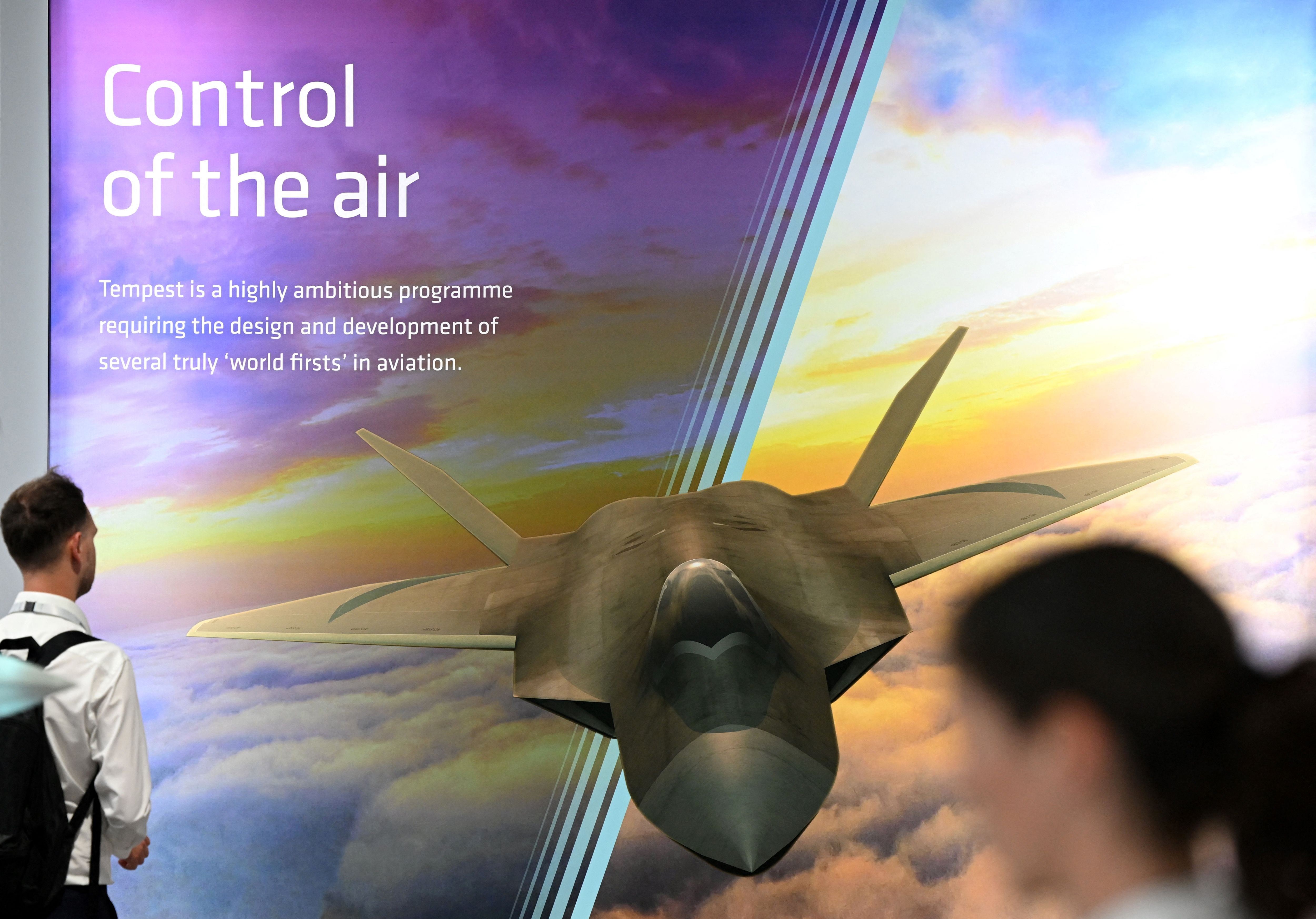LONDON — Britain, Italy and Japan are to co-operate in developing a sixth-generation fighter, the three nations say in a joint statement due for release on early Friday.
Few details were available before the scheduled announcement beyond the project’s name – Global Combat Air Programme (GCAP) – and the fact the partners say they plan to have the fighter ready by 2035.
Britain and Italy have previously collaborated in early development work on their own future combat air project, while Japan has been pursuing its next-generation F-X program.
If GCAP goes ahead it will be the biggest Japanese-European defense co-operation program ever undertaken.
For the moment there is no mention of whether Sweden remains interested in joining the program.
The Nordic nation has been evaluating the possibility of a tie-up with Britain for a future combat air requirement, better known as Tempest, for several years but in recent months has cooled on the idea.
The partnership dialogue with Sweden is said to be continuing, with the two sides exploring how they can build on previous collaboration with the British on programs like the Saab Gripen fighter.
In a statement a Saab spokesman said the company is “focused on supporting the Swedish authorities on reviewing the Swedish future combat air system context.”
The company received a 250 SEK million ($24 million) contract from the Swedish government to study future fighter development.
British Prime Minister Rishi Sunak said in a statement providing security for Britain with programs like GCAP was vital.
“We need to stay at the cutting-edge of advancements in defence technology – outpacing and out-maneuvring those who seek to do us harm. The international partnership we have announced today with Italy and Japan aims to do just that, underlining that the security of the Euro-Atlantic and Indo-Pacific regions are indivisible,” he said.
The three governments said that GCAP will “deepen our defense co-operation, science and technology collaboration, integrated supply chains, and further strengthen” the shared defense industrial base.
“Importantly, the program will support the sovereign capability of all three countries to design, deliver and upgrade cutting-edge combat air capabilities, well into the future,” said the statement.
The British future combat air strategy envisaged a Tempest a program combining a core aircraft at the heart of a network of wider capabilities, such as uncrewed aircraft, sensors, weapons and advanced data systems. That’s unlikely to change.
“We share ambition for this aircraft to be the centerpiece of a wider combat air system that will function across multiple domains,” said the GCAP statement.
Mark Hamilton, Leonardo’s UK Electronics managing director, said industry was ready to deliver the capabilities required.
“The emergence of a single international program, backed by three governments, represents a major point of maturity for our shared combat air vision and a strong vote of confidence in the readiness of industry to deliver the program,” said Hamilton.
Britain and Japan have been building a defense relationship for a while.
That work resulted last December in the two sides agreeing to develop a fighter jet engine demonstrator. The UK MoD is also supporting Japan in the delivery of their Joint New Air-to-Air Missile (JNAAM) program.
Under the banner of “Team Tempest” a British industry partnership involving BAE Systems, Leonardo, MBDA and Rolls-Royce have been leading the development of a new fighter to start replacing Typhoon combat jets beyond 2040.
Andrew Chuter is the United Kingdom correspondent for Defense News.








